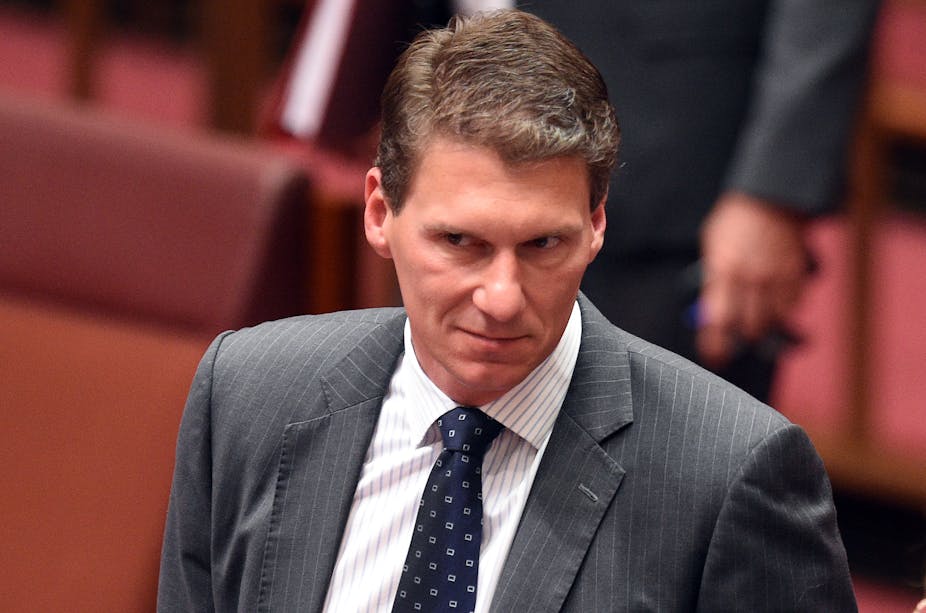In 1985, B.A. Santamaria speculated about the possibility of a new political party in Australia that would be composed of the Nationals, the traditionalist section of the Liberal Party and the “moderate and anti-extremist section of the blue-collar working class”.
Today this combination of groups would probably be referred to as “conservatives”, but the Santamaria term “traditionalist” seems more appropriate. Despite the changes that have occurred over the past 30 years, the traditionalist section of the population is still there, even if technological change and the decline of manufacturing industry has had a massive impact on the blue-collar working class.
Two things are interesting. One is this hypothetical party has not come into being. The second is the 2016 election results indicate these three components of such a party still exist, even if they have not coalesced.
The election saw a resurgence of One Nation, a significant increase in the vote of the Christian Democratic Party in New South Wales, a very good showing for the Nationals, and a massive repudiation of Prime Minister Malcolm Turnbull by western Sydney.
Liberal senator Cory Bernardi now claims his “Australian Conservatives” movement has recorded more than 50,000 registrations since its founding after the election.
The elements of Santamaria’s “traditionalists” remain fragmented, but could be potentially powerful should they come together. The central question is: why have they failed to come together in a new party?
Why has it never happened?
One answer is John Howard. Howard, who admires Santamaria, understood the need to reconcile this section of the Australian population who would be tempted to vote for such a party. If John Hewson had been elected in 1993 the story might have been much different.
Faced by the threat of One Nation after 1996, Howard sought as prime minister both to neutralise One Nation’s impact and appeal to those who supported Pauline Hanson.
“Howard’s battlers” were succeeded by “Tony’s tradies”. It is worth remembering that Tony Abbott was one of Hanson’s fiercest foes.
In the last 12 months, under the leadership of an eastern suburbs small-l liberal, the Liberal Party has decided it wants to look more like the party of Hewson than the party of Howard. In so doing, it has seriously risked alienating its “traditionalist” support.
Another answer to the failure of a “traditionalist” party to emerge lies in the fractious nature of right-wing politics in Australia. This form of politics has its roots in the 19th-century ideal of the independent member who votes according to conscience and dislikes being told what to do. This makes collective action quite difficult. They find it hard to accept party discipline.
One Nation disintegrated as a single entity when it had 11 members elected to the Queensland parliament in 1998. Something similar occurred to the Palmer United Party in the federal parliament after 2013.
Politicians who value their independence tend to have strong personalities, which makes it difficult for them to work with other strong personalities. It is difficult to see how this problem could be resolved.
This lack of unity is a real problem for “traditionalists”. It will not be resolved unless they can find a mechanism that allows them to work together.
However, what the 2016 election result does indicate is that when the Liberal Party becomes too liberal it will alienate a significant part of its electoral base. It did so in 1993 and it has done so again in 2016.
If the Liberals cannot reconcile their conservative elements, then they will fail to win those seats in rural and regional Australia, especially in NSW and Queensland, they need if they wish to form government.
The Liberals will also surrender seats in the Senate to “traditionalists” who have the capacity to make their lives a misery. If, however, they alienate some of their liberal vote, all this will mean will be a reduced majority in safe liberal seats.
Could it ever become a reality?
What, then, are the prospects of Santamaria’s “traditionalist” party becoming a reality? Two conditions need to be fulfilled for it to happen.
One is that the Liberal Party adopts ultra-liberal policies in both economic matters and social and cultural policy. The other is that a figure emerges among the traditionalists who possesses sufficient charisma to enable them to unite. None of the current “traditionalist” leaders appears to have the capacity to unite the various groups.
Neither of these conditions seems likely to be fulfilled in the short term. Instead, the Liberals will continue to limp along, caught between a rock and a hard place.
If they become too liberal, they will risk alienating “traditionalist” voters who they need if they are to retain power. If they become too “traditionalist”, they will be denounced in sections of the media.
The Coalition won the 2016 election by the barest of margins. If there is a message in that near-death experience it is that the Coalition cannot continue to be the government of the day if it claims the ultra-liberal mantle of Hewson and Fightback!. This is the danger of having a leader who comes from the seat of Wentworth.
There is a significant number of “traditionalists” out there in the electorate, and the Liberal Party cannot take their support for granted.

